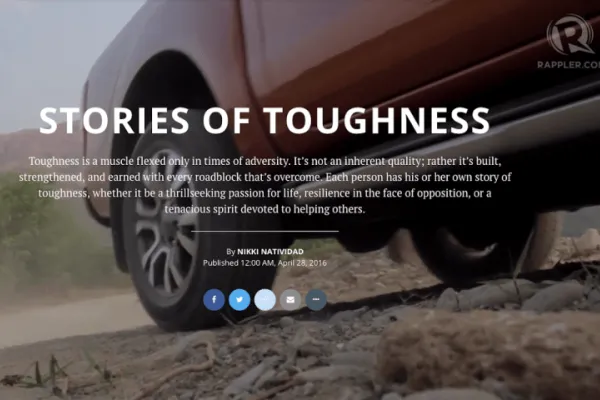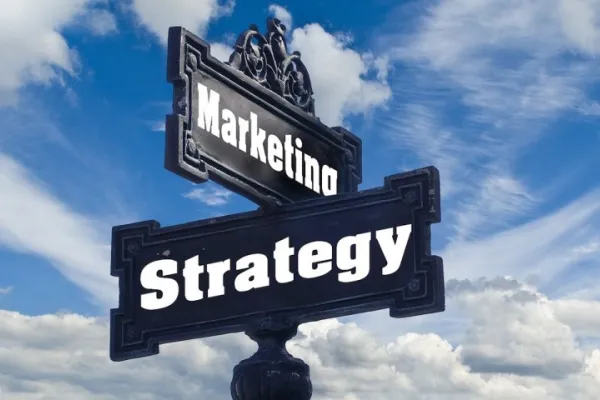 Details
Details
The advertising ecosystem is undergoing an extensive transformation these days, and advertisers as well as publishers are trying to gain foothold in the emerging native advertising industry. Additionally, we see adtech companies rise from the need of bringing content in front of the right audience in ways that lead to engagement and drive revenue.
I recently spoke with François-Xavier Préaut, Outbrain’s regional director, sales, for Southern Europe, to get his take on Outbrain and the native advertising ecosystem.
Tobi Elkin: What role does native advertising play for Outbrain?
François-Xavier Préaut: Brands that partner with more traditional publishers to create custom experiences are becoming a greater part of the media ecosystem. The role of native for Outbrain is both important and evolving. At the most basic level, our native formats are installed on thousands of publisher sites across the globe and differ widely in both form and function.
Elkin: What's your definition of native? How does it function on a site? Do you equate native with branded content?
Préaut: Native is a buzzword that is used widely, but not always understood. Native means a lot of different things to different people. In simplistic terms, native is a form of online placement--some would say, advertising--that matches the format, context, and function of the platform on which it appears.
So if native is the format, then branded content could be considered the landing page, i.e., the place that the reader is directed to after clicking. Audiences have a low tolerance for interruptive advertising (display), but they will engage with content that feels relevant, is housed in premium real estate, and directly and transparently contributes to the experience of the site they are on. In fact, when done well, people will actually engage with and remember good native, making it the solution of choice for marketers who want to drive quality traffic to their content.
Elkin: Are branded content and content marketing two very different things?
Préaut: Yes. This is not just about swapping between the latest buzzwords. To me they are two distinct things. I think of branded content as just that: an individual piece of content (a video, article, or infographic, etc.) produced by a brand in order to communicate a message to a target audience.
On the other hand, content marketing is a strategic proposition made up of a series of stages that address the complete customer journey, and help marketers to get the most out of their content. It will look slightly different for each brand, but in essence we aim to look at marketer objective/s, content, targeting, measurement, and optimization.
Previously, in Southern Europe, 'branded content’ while used a lot, was seen as a cost center. It was considered very expensive and without purpose, and in some people’s opinion useless at driving business impact. Today, that view has shifted, as companies like Outbrain work hard to continually innovate and move digital marketing beyond a simple call-to-action (or click). We are now able to support brands to address the complete customer journey and, in turn, perceptions are changing. The most knowledgeable and active participants now see content marketing as an opportunity to turn branded content--brand stories--into measurable results for brands.
Elkin: What trends are you seeing for native advertising in southern Europe, the region you're responsible for?
Préaut: The brands that we are working with and that are using native formats in southern Europe are more and more focused on measuring the real impact of their native campaigns, taking into consideration the contribution of every single click instead of only focusing on the last click (the traditional Google Search model).
We are seeing this behavior across brands, but especially with marketers operating in the consumer package goods and tourism sectors, as well as pure-play digital marketers. Not only are they able to measure the ROI of content marketing at the most basic click level, but they can now leverage content to move audiences down the funnel and drive conversions at every stage.
Elkin: What are some best practice for ensuring readers have a positive experience with native?
Préaut: Brands that get native right create content that is transparent and offers real value to their audience in the form of information, insights, or entertainment. This content is not salesy, nor does it talk solely (if at all) about the product.
They are also careful about how they use the real estate around their native content—they use it to strengthen brand associations and drive their social following.
They think about headlines and look for impactful thumbnail imagery, as these are the first touchpoints with their brand, and they test to optimize click-through rates and post-click performance (engagement, conversions, etc.).
Most importantly, they create robust content distribution strategies together with their publisher partner to amplify native content through social channels and paid content distribution channels (e.g. Facebook, Outbrain, and others).
Elkin: How does native relate to display advertising? Can they function side-by-side or complement one another? How so?
Préaut: Things are not going well for traditional display advertising. It’s not because of the format, but because of the content. For the most part, the content is not interesting—and by extension, not relevant. So readers have learned to ignore banners and turned to ad blockers. Relevance is important here. I, like the majority of people, ignore most banners—their content doesn’t take my needs or interests into account, so they are irrelevant and annoying to me.
However, I do engage with display ads that showcase quality content. So while I may be swimming against the tide, I’m pretty optimistic about banners that are well-integrated on high quality sites and which contain relevant content or original messages. I'm also pretty sure that advertisers will keep using display advertising as a pure awareness driver, while content marketing and native will be used to strengthen audience relationships and drive measurable results.
Elkin: What are some of the measurement challenges with native?
Préaut: Marketers should, of course, measure the number of visits to their content, but also the time spent on site, number of page views, percentage of shares, number of conversions and resulting sales, extending beyond this to the number of repeat visits, repeat purchases and so on. For our part, we are focused on delivering more tools and capabilities to our clients, allowing them to target, measure, and optimize at every step with technologies such ascustom audiences and story sequencing.
Elkin: What are some of the developments you see with respect to mobile and native?
Préaut: Today, a significant percentage of Outbrain’s revenue is mobile, and we view native as a big opportunity for marketers (and publishers), as display ads are getting squeezed out in a mobile-first world. Traditional banners have been too small and often invisible, and interstitials are simply too aggressive for this most personal of devices.
Mobile page views have nearly doubled in the past two years and now account for about half of all content consumption. This trend is not so much about the device as it is about consumer choice. Not only do consumers have the ability to choose media and content, but also the platform or app they prefer to use. The common denominator is a positive user experience.
Facebook Instant Articles, Snapchat Stories, Twitter Moments, Apple News, and now Google AMP via the mobile browser, are all changing the user experience—speeding it up and allowing marketers to present content that is more suitable for a mobile experience.
Outbrain has been working with Google since October 2015 to create a recommendation standard that will fit within the AMP (Accelerated Mobile Pages Project) guidelines. In December 2015, Outbrain became a partner with Google on AMP. The AMP standard and similar efforts to improve the user experience on mobile are changing how native content discovery happens on mobile and its frequency, among other things.
Elkin: What are the pricing models you're seeing for native? Cost-per-click (CPC), CPM, and cost-per-acquisition? How are these evolving?
Préaut: I would make a distinction here between push advertising (display) and pull advertising (native). By push, I mean a promotional advertising message to a user for which I charge the advertiser for each impression on a CPM basis. By pull, I mean when a user responds to something that they find interesting and I charge the advertiser only when there's true engagement: CPC.
Outbrain’s pricing model is built around CPC. We have a reach of half a billion unique users every month. It is, however, worth noting that most of our campaigns are also managed according to other KPIs. Marketers want results, and our job at is to make sure that the traffic we deliver to brands is ROI-positive.
Elkin: Any other key takeaways?
Préaut: Native advertising is incredibly effective, but if we misuse the format to push uninteresting messages to readers, we might as well end up in the same place as display. Again, the bigger evolution is not native, but content marketing.
It is key that we do not repeat what the advertising industry did with display advertising. Over the course of the last 10 years, the industry has been guilty of misplacing its priorities. It has focused on how clever it can be with formats, rather than focusing on the audience and the quality of the content.
Rather than go back to basics (interesting and relevant creative content) to stave off the steep decline in click-through rates, the industry created even more new formats, and most of them are very intrusive. The end result is ad blocking.
Editor’s note: The piece was slightly edited from the original for NAI. The original appeared on MediaPost.

About the author Tobi Elkin is Editor of MediaPost's Native Insider and Real-Time Daily email newsletter where she reports on developments within the native/branded content spaces, along with programmatic media and real-time marketing trends. Tobi also has many interests as a freelance journalist and interviewer including podcasting, intergenerational storytelling and creativity--where it comes from and what sustains it. For more information, visit: www.mediapost.com and www.tobielkin.com

